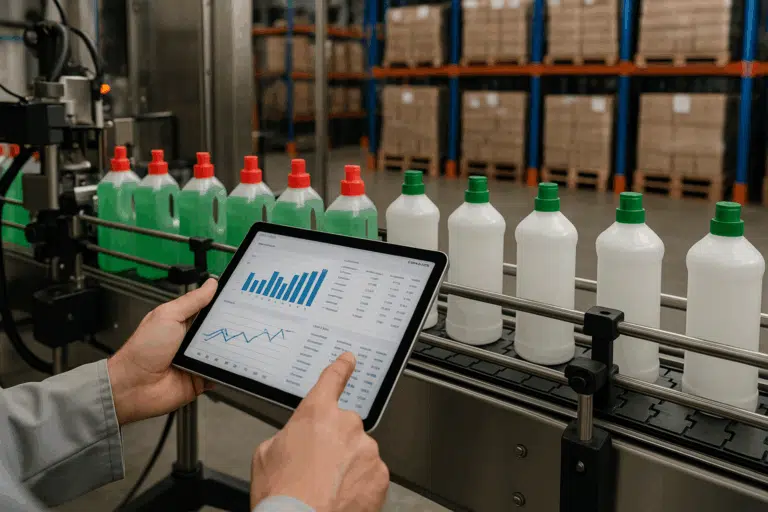Fixed asset management best-practices and RFID tracking technology enhance proper accounting, valuations, and financial reporting. Fixed assets like vehicles, machinery, computers, furniture, and equipment often represent the largest item on the balance sheet as the “long-term tangible assets”. One of the challenges of fixed asset management is manually managing and tracking asset transfers, disposals, and additions, which can lead to inaccurate inventory data, misstatements of fixed asset balances, and time-consuming processes.
As a tracking technology, RFIDs replace barcodes to provide bulk item scanning, data storage, and real-time data reporting properties. ERP-RFID integrated data automates inventory data collection and reconciliation procedures, providing an essential internal control for the financial reporting of fixed assets.
What Is Fixed Asset Management?
Fixed Asset Management is the process of tracking and managing a company’s physical (fixed) assets, such as equipment, machinery, buildings, land, and vehicles, from acquisition to disposal. The objective of fixed asset management is to optimize the value and utilization of the company’s assets, while minimizing costs and risks.
The key components of fixed asset management include asset identification, recording, tracking, maintenance, depreciation, disposal, and reporting. This involves developing an inventory of all fixed assets, assigning a unique identifier to each asset, recording its purchase date, cost, and useful life, and tracking its location, condition, and usage over time.
Effective fixed asset management ensures organizations to comply with accounting and tax regulations – including, but not limited to US GAAP, IFRS, FASB ASC, etc. -, as well as to fortify their financial records by accurately reporting the value and depreciation of their assets. It also helps organizations to make informed decisions about their assets, such as whether to repair or replace equipment, when to schedule maintenance, and when to dispose of assets that are no longer needed.
What Is RFID Asset Tagging?
RFID (Radio Frequency Identification) is essentially a tracking technology that utilizes from radio frequency waves to identify assets. RFID asset tagging is a process of afixing RFID tags to physical assets to track and manage them throughout their lifecycle. RFID asset tags are property electronic labels that contain a microchip and antenna, that communicates with RFID readers and software.
In contrast to barcodes, RFID tags / labels are not constrained by line-of-sight for scanning, and multiple Tags can be read simultaneously. Once the assets are tagged, they can be tracked and located in real-time using RFID readers, which transmit and receive signals to and from the RFID tags. This allows for quick and accurate identification and inventory management of assets, as well as real-time monitoring of their location, status, and maintenance history. Leading to faster and more accurate data capture, increased efficiency and productivity, and reduced errors and costs.
Top 4 Fixed Asset Management Challenges
Historically, organizations have accounting and operational challenges associated with their fixed asset management, internal controls, financial reporting and regulatory compliance. Both rely on accurate information of their fixed asset existence to account for, identify and control their property assets.
Overcoming manual time-consuming and error-prone processes
Managing inventory data related to fixed assets can be challenging, especially when accounting for a large number of assets. Maintaining accurate records into a centralized database involves manual processes of inventory data collection and reconciliations through barcodes and spreadsheets, that can lead to errors, duplicates, time-consuming processes, and inaccurate inventory data for financial reporting, tax, and regulatory compliance.
Overcoming ERP system inadequacies
ERP systems often don’t provide the level of detail necessary for ensuring compliance with regulations and accounting standards related to fixed asset management. These do not offer proper tools and support for asset existence testing and updating, audits, depreciation analysis, and law updates, which can result in time-consuming data entry, extraction and re-entry. Organizations may rely on their IT departments to customize ERP functionality and manage data, causing delays and expenses.
Managing financial reporting close pressures
Organizations often face challenges in closing their books due to a variety of factors, including managing the flow of information from multiple departments, reconciling data from disparate systems, and relying on manual processes. These challenges can consume a significant amount of time and resources, leaving little room for analysis or strategic initiatives.
Accurately tracking fixed assets inventories
Organizations face issues with incomplete or inaccurate fixed asset data – even, in some cases, having discrepancies in more than 50% of the fixed asset data. Fixed assets are managed across different locations and tax jurisdictions. This results in a growing volume of data that must be accurately tracked.
RFID automation traces asset movement to support better internal controls
As a tracking technology, RFIDs are widely used to identify and trace asset movements and support better internal controls. By attaching RFID tags to physical assets, companies can track and monitor their location and movements in real-time, which ensures accurate inventory data and financial records, as well as helping companies to prevent loss, theft, misutilization or misplacement of assets. For example, if an asset is moved to a different cost center or it is returned to its designated location, RFID technology can alert the company in real-time and update records, allowing for immediate investigation and corrective action.
Moreover, RFID technology can support better internal controls by providing an audit trail of asset movements and transactions. This helps to increase transparency and accountability, as well as to facilitate compliance with regulatory requirements and internal policies.
RFIDs reduce the needs for manual data entry and streamline ERP Systems’ fixed asset data
By using RFID tracking technology, organizations can streamline their ERP (Enterprise Resource Planning) systems’ fixed asset data management processes. ERP systems with RFID integration can automatically update the fixed asset data in real-time as the assets are moved, tracked, and updated. This reduces the manual effort required for data entry and improves the accuracy and reliability of the data. RFID data collection (scanning) help organizations identify and respond to issues more quickly. Handheld RFID Scanners can read and identify more than 100 Tags each second. All errors or discrepancies can be minimized or eliminated. RFIDs reduce the number of errors and improves accuracy of inventory, which leads to better inventory management and control.
Real-Time RFID data communication helps with SOX Section 409 and 802 Compliance
SOX Compliance is a massive task to be handled manually. SOX Section 409 and 802 require the direct involvement of information systems, such as ERP. On one hand, SOX Section 409 demands the rapid and current disclosure of any material changes in the firm’s financial standing and operation within four days. This means that companies updating their data and systems in weekly or monthly batches are not in compliance with SOX Section 409. By connecting RFIDs to the firm’s ERP, firms can receive real-time data from RFID tracking systems on their fixed assets, inventories, and any other management information, which enables quick and accurate reporting of financial position and operations. On the other hand, SOX Section 802 requires immutable data retention of any material changes in the firm’s information disclosure. With the integration of RFIDs into business processes, RFID Systems records detailed logs of inventory movement and full history of data input. Ensuring proper management of changes and retaining the data for future use and reporting in compliance with SOX Section 802.
RFIDs revolutionize fixed asset inventorying and auditing
With RFIDs, organizations can track their fixed assets in real-time and locate them easily, even across multiple locations. The technology provides a continuous and accurate record of assets, which can be visualized in real-time by authorized personnel. Streamlining the process of conducting physical inventory audits, reducing the time and effort required to reconcile inventory discrepancies. This can help organizations to save time and resources, while also minimizing the risks associated with manual data entry and human error.
Where to start if you think RFID can help
The most appropriate place to start is to reevaluate those business processes and internal controls you wish could be automated. For instance, one may choose to streamline Fixed Asset Management tasks with the implementation of RFID Systems to their facilities, plants, and departments. By integrating RFIDs with ERP Systems, firms eliminate manual data entry, individual scanning, data verification (reconciliation), and asset searching. As well as creating real-time visibility for Asset Tracking and Management operations.
CPCON has vast experience in guiding firms to business processes solutions and advanced RFID technology. So let us help you get started today.



























